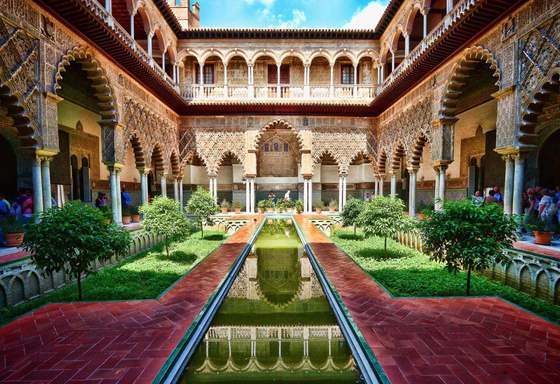Al-Andalus .. A Beacon of Religious Coexistence and Civilizational Synthesis

Al-Andalus: A Beacon of Religious Coexistence and Civilizational Synthesis
Al-Andalus (Islamic Iberia, 711–1492 CE) stands as a unique and profound historical paradigm of religious coexistence and cultural blending. It was not merely a territory under Islamic rule but a melting pot where Muslims, Christians, and Jews interacted, leading to an unprecedented flourishing of civilization.
1. Historical Foundation and the Zenith of Coexistence
The Islamic presence in Al-Andalus was instrumental in establishing an atmosphere of relative tolerance.
- Liberation from Persecution: Historians note that the conquest in 711 CE was welcomed by many Jews and non-Catholic Christians who had suffered severe persecution under the preceding Visigothic Catholic rule. The new Islamic administration offered them protection and freedom of worship under the terms of the (covenant of protection).
- The Golden Age of the Caliphate: This coexistence reached its peak during the Caliphate of Córdoba (10th century CE), especially under Caliph Abd al-Rahman III (Al-Nasir). His reign is often cited as a period of deep integration where his wise and tolerant policies transformed Córdoba into a global center for peace-building and intellectual exchange among the three Abrahamic faiths.
2. A Golden Age for Non-Muslim Communities
The status of (protected people) ensured that Christians and Jews maintained their religious freedom and internal autonomy.
- Jewish Prosperity: This era is often called the “Golden Age of the Jews” in Europe. Jewish scholars like Hasdai ibn Shaprut, who served as a physician and diplomat, held high state positions. Great Jewish philosophers and thinkers such as Moses Maimonides (Ibn Maymun) emerged, writing their seminal works in Arabic, underscoring the profound cultural integration.
- The Mozarabs (Arabized Christians): These were the Christians who adopted Arabic culture, language, and customs while retaining their Christian faith. They maintained their ecclesiastical organization and legal autonomy, actively participating in the society, with Arabic becoming their common language of science and culture.
3. Shared Intellectual and Cultural Contributions
Religious harmony became a powerful engine for a massive scientific and cultural renaissance, whose influence profoundly impacted the European Renaissance.
- Philosophical Synthesis: The intellectual environment fostered the emergence of rationalist philosophies, notably that of Ibn Rushd (Averroes), whose ideas heavily influenced Western thought. Scholars from all three faiths collaborated extensively in the massive translation movement that introduced Greek and Roman knowledge to the West.
- Art and Architecture: The spirit of coexistence was physically manifest in the Mudéjar style of architecture, which blended Islamic elements (geometric patterns, calligraphy) with Christian and local techniques. Furthermore, the arts, including poetry and music, saw active participation and enrichment from Jewish, Christian, and Muslim artists and musicians.
4. Historical References
The Andalusian experience continues to be a subject of deep study. Key historical and academic references that document this unique era include:
- The works of Ibn Hazm al-Andalusi (a key Andalusian philosopher).
- Numerous modern studies focusing on the social and legal status of and the specific policies of Abd al-Rahman III.
- The writings of contemporary European historians, who have frequently acknowledged the moderation and sophistication of the Islamic policy towards its diverse populations in Al-Andalus.